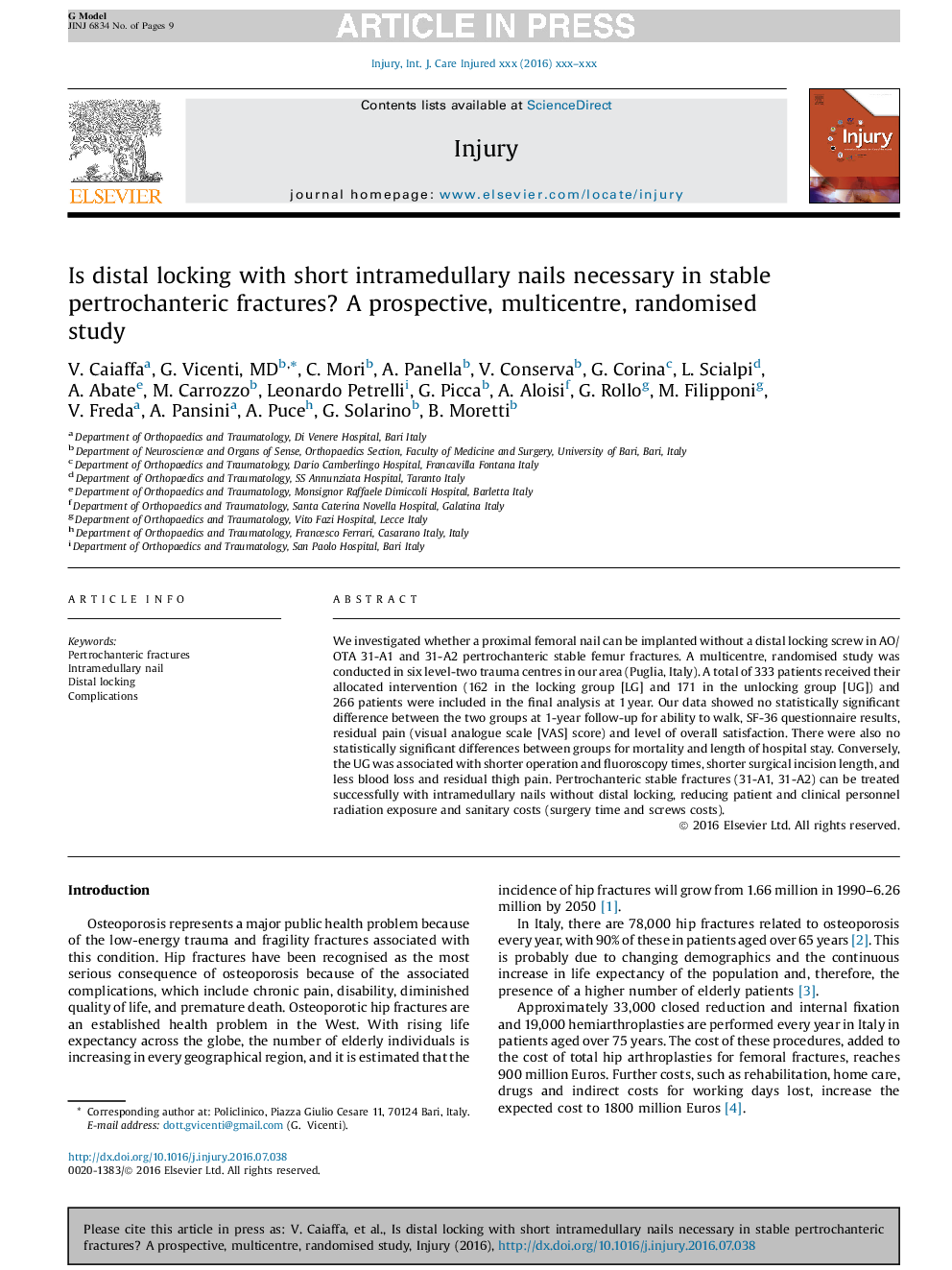| Article ID | Journal | Published Year | Pages | File Type |
|---|---|---|---|---|
| 5652581 | Injury | 2016 | 9 Pages |
Abstract
We investigated whether a proximal femoral nail can be implanted without a distal locking screw in AO/OTA 31-A1 and 31-A2 pertrochanteric stable femur fractures. A multicentre, randomised study was conducted in six level-two trauma centres in our area (Puglia, Italy). A total of 333 patients received their allocated intervention (162 in the locking group [LG] and 171 in the unlocking group [UG]) and 266 patients were included in the final analysis at 1Â year. Our data showed no statistically significant difference between the two groups at 1-year follow-up for ability to walk, SF-36 questionnaire results, residual pain (visual analogue scale [VAS] score) and level of overall satisfaction. There were also no statistically significant differences between groups for mortality and length of hospital stay. Conversely, the UG was associated with shorter operation and fluoroscopy times, shorter surgical incision length, and less blood loss and residual thigh pain. Pertrochanteric stable fractures (31-A1, 31-A2) can be treated successfully with intramedullary nails without distal locking, reducing patient and clinical personnel radiation exposure and sanitary costs (surgery time and screws costs).
Related Topics
Health Sciences
Medicine and Dentistry
Emergency Medicine
Authors
V. Caiaffa, G. MD, C. Mori, A. Panella, V. Conserva, G. Corina, L. Scialpi, A. Abate, M. Carrozzo, Leonardo Petrelli, G. Picca, A. Aloisi, G. Rollo, M. Filipponi, V. Freda, A. Pansini, A. Puce, G. Solarino, B. Moretti,
